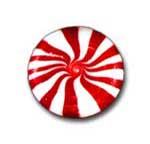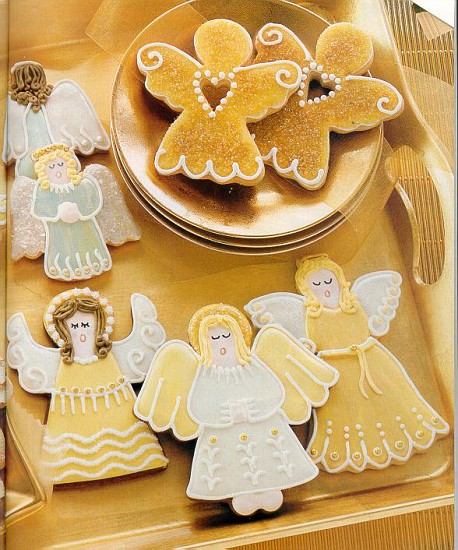|
~The FReeper Canteen Presents~ Favorite Christmas Treats
Gingerbread has been baked in Europe for centuries. In some places, it was a soft, delicately spiced cake; in others, a crisp, flat cookie, and in others, warm, thick, steamy-dark squares of "bread," sometimes served with a pitcher of lemon sauce or whipped cream. It was sometimes light, sometimes dark, sometimes sweet, sometimes spicy, but it was almost always cut into shapes such as men, women, stars or animals, and colorfully decorated or stamped with a mold and dusted with white sugar to make the impression visible. During the nineteenth century, gingerbread was both modernized and romanticized. When the Grimm brothers collected volumes of German fairy tales they found one about Hansel and Gretel, two children who, abandoned in the woods by destitute parents, discovered a house made of bread, cake and candies. By the end of the century the composer Englebert Humperdink wrote an opera about the boy and the girl and the gingerbread house.
       

Cookies appear to have their origins in 7th century AD Persia, shortly after the use of sugar became relatively common in the region. By the 14th century, they were common in all levels of society, throughout Europe, from royal cuisine to street vendors.
With global travel becoming widespread at that time, cookies made a natural travel companion, a modernized equivalent of the travel cakes used throughout history. One of the most popular early cookies, which travelled especially well and became known on every continent by similar names, was the jumble, a relatively hard cookie made largely from nuts, sweetener, and water.
Cookies came to America in the very first century of English settlement (the 1600s), although the name "koekje" arrived slightly later, with the Dutch. This became Anglicized to "cookie". Among the popular early American cookies were the macaroon, gingerbread cookies, and of course jumbles of various types.
The most common modern cookie, given its style by the creaming of butter and sugar, was not common until the 18th century.
       

The earliest Fruitcake recipe from ancient Rome lists pomegranate seeds, pine nuts, and raisins that were mixed into barley mash.
In the Middle Ages, honey, spices, and preserved fruits were added and the name "fruitcake" was first used, from a combination of the words "fruit" (Latin: fructus, Old French: frui), and "cake" (Old Norse: kaka, Middle English: kechel).
Fruitcakes soon proliferated all over Europe, however recipes varied greatly in different countries and throughout the ages, depending on the available ingredients as well as in some instances on church regulations of the use of butter, regarding the observance of fast (e.g. "Butterbrief" or butter letter by Pope Innocent VIII). Pope Innocent VIII, (1432 – 1492), the Holy Father softened his attitude and in 1490, he sent a permision known as the “Butter Letter” to Saxony, stating that milk and butter could be used in the North German Stollen fruitcakes.
Starting in the 16th century, sugar from the American Colonies, and the discovery that high concentrations of sugar could preserve fruits, created an excess of candied fruit, thus making fruitcakes more affordable and popular.
In the 18th century in some areas in Europe, fruitcakes were made using nuts from the harvest for good luck in the following year. The cake was then saved and eaten before the harvest of the next year. What is your favorite Christmas Treat?
Merry Christmas!        
FR CANTEEN MISSION STATEMENT~Showing support and boosting the morale of our military and our allies military and the family members of the above. Honoring those who have served before.
Please remember: The Canteen is a place to honor and entertain our troops. The Canteen is family friendly. Let's have fun! We pray for your continued strength, to be strong in the face of adversity. We pray for your safety, that you will return to your families and friends soon. We pray that your hope, courage, and dignity remain unbroken, so that you may show others the way. God Bless You All ~ Today, Tomorrow and Always |